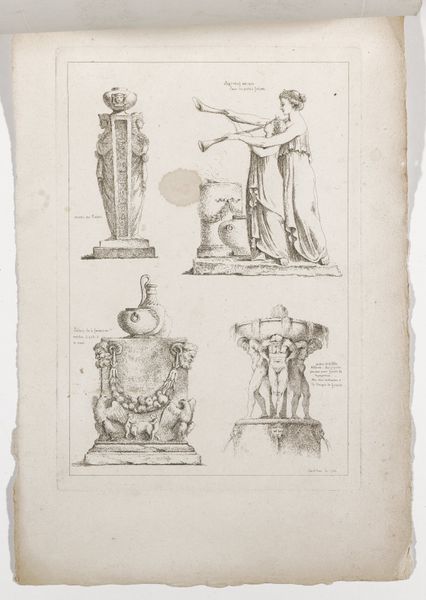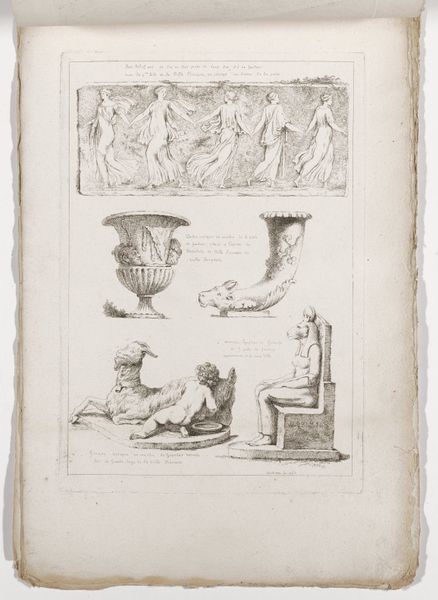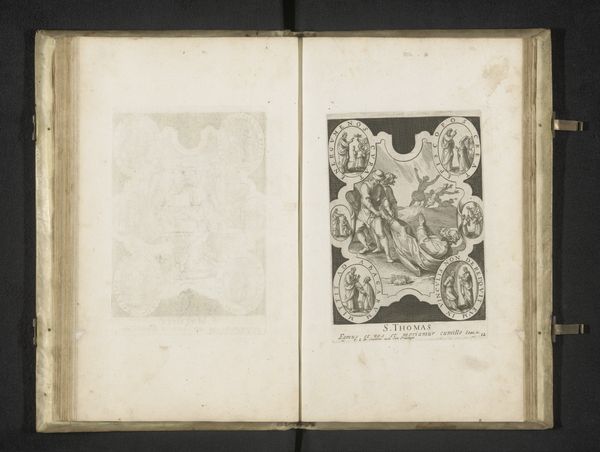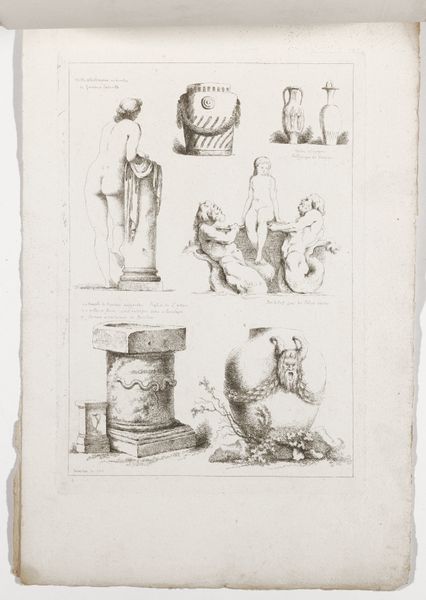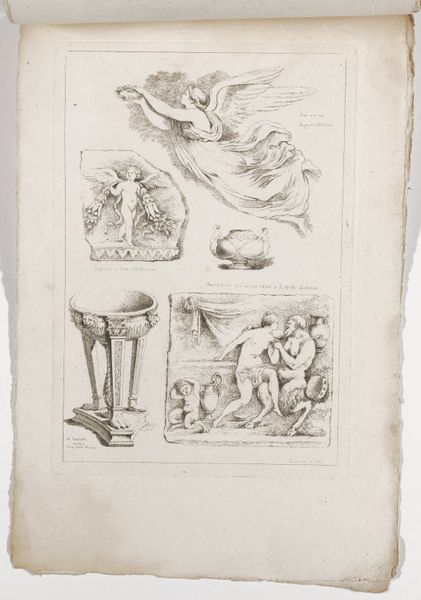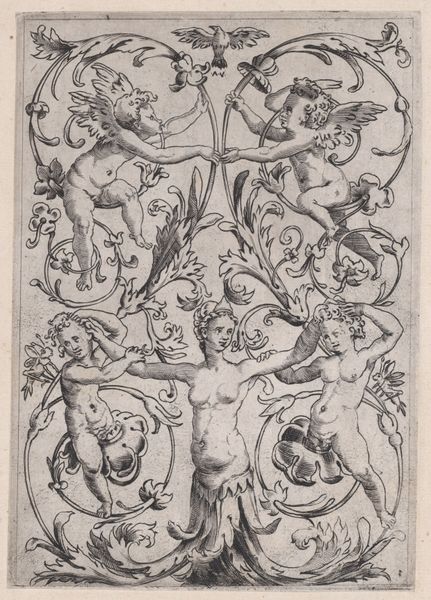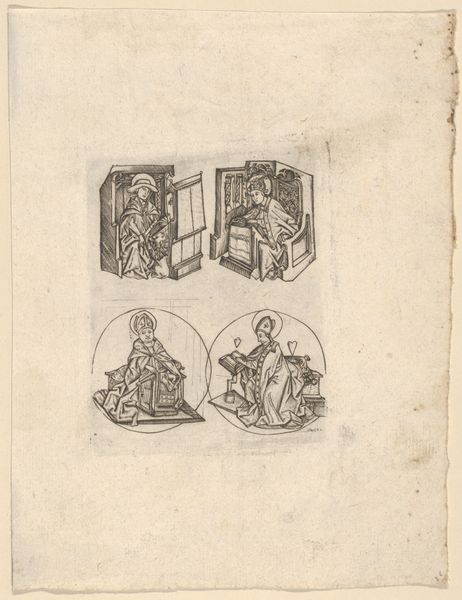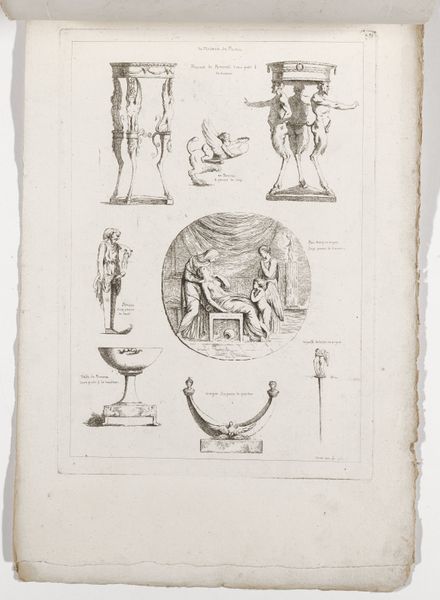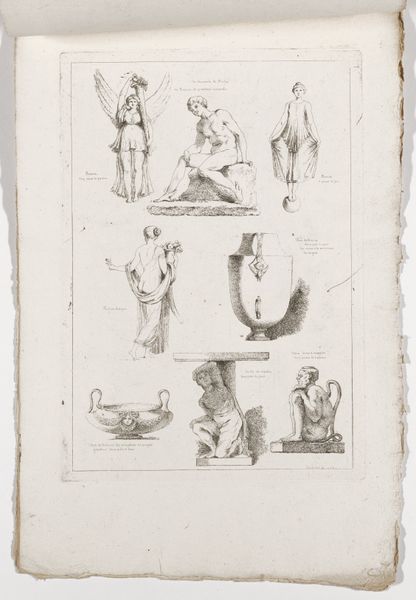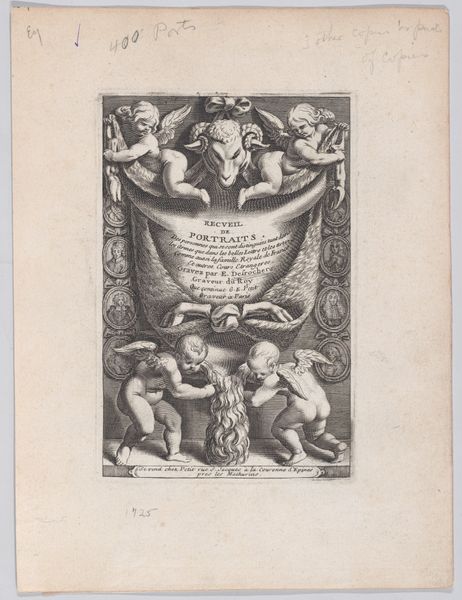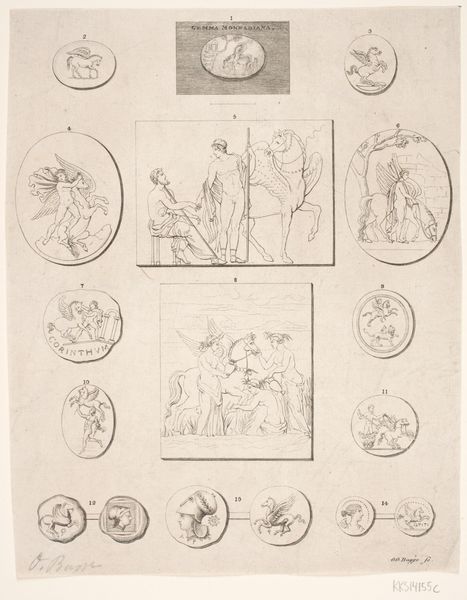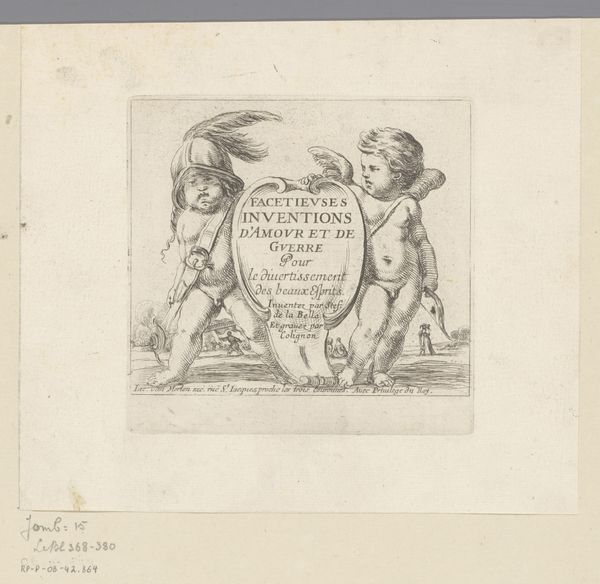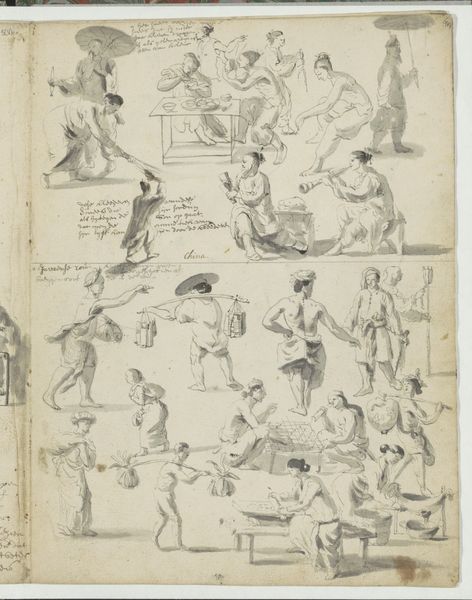
drawing, print, etching, paper, engraving
#
drawing
# print
#
etching
#
paper
#
engraving
Dimensions: 12 3/4 × 8 7/8 in. (32.39 × 22.54 cm) (plate)16 15/16 × 11 1/8 in. (43.02 × 28.26 cm) (sheet)
Copyright: Public Domain
This is Fascicule II, an etching made by Jean Claude Richard, Abbé de Saint-Non in France in the late 18th century. It's one of many prints made at this time, reproducing antique artworks for a growing audience of collectors and scholars. This print compiles images of ancient Roman artifacts. Note the classical figures harvesting grapes and the sculpture of the three graces. The etching translates three-dimensional objects into two-dimensional images. In doing so it flattens the original context of the object, presenting it as a specimen for study. The Abbé de Saint-Non was part of a network of artists and intellectuals interested in classifying knowledge about the past. These detailed etchings served as a visual record but also contributed to the formation of taste and the development of art history as a discipline. To fully appreciate this work, one might consult inventories of collections, correspondence between antiquarians, and early museum catalogs. Fascicule II helps us consider how the institutions of art shape our understanding of the past.
Comments
minneapolisinstituteofart almost 2 years ago
⋮
The Jean-Baptiste Claude Richard (also known by his title abbé Saint-Non) embodied the important role of the amateur, an patron and connoisseur of the arts as well as a practitioner in 18th-century France. He was a skilled networker, a curious, innovative printmaker, and he supported his artist friends in their projects and travels. Saint-Non executed this suite of prints in Paris in 1763, representing antique fragments and reliefs he saw during his travels in Italy from 1759 to 1761. Most of the monuments are identified in the inscriptions by their locations in Rome. The works reflect French artists’ fascination with antiquity at the time, and the way in which these sources were transmitted to a larger public through the circulation of prints. Remarkably the suite of etchings remain as originally issued, in three groups of six deckle-edged sheets stitched together simply along the top edge.
Join the conversation
Join millions of artists and users on Artera today and experience the ultimate creative platform.

